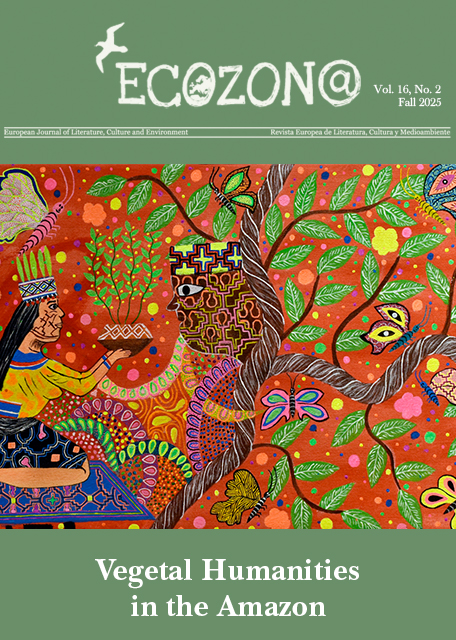<b>Frederick Law Olmsted’s Failed Encounter with Yosemite and the Invention of a Proto-Environmentalist</b> // El encuentro fallido con Yosemite de Frederick Law Olmsted y la invención de un proto-ecologista
DOI:
https://doi.org/10.37536/ECOZONA.2014.5.1.590Keywords:
Ecocriticism, environmentalism, Olmsted, Yosemite, National Parks, landscape / Ecocrítica, ecología, Parques Nacionales, paisajeAbstract
In 1865 Frederick Law Olmsted read to the Yosemite Commissioners a report detailing his ideas about California’s newly reserved natural space and his recommendations for its development as a “public park or pleasure ground.” His text, “The Yosemite Valley and the Mariposa Big Trees: A Preliminary Report,” was lost for almost a century until his biographer Laura Wood Roper unearthed it, pieced it together, and published it. In spite of the lack of response it obtained at the time it was written, Olmsted’s text is now held up as a foundational document for both the National Parks system and environmentalism. This paper investigates how the stillborn proposal came to achieve canonical status in the late twentieth century and how legends concerning it have accrued. The report has become the road not taken; it allows people to imagine what the Yosemite National Park might have remained if it had not been subject to intense development. Taken up by contemporary environmentalists, Olmsted’s text is made to authorize a myth of origins that is simpler and more inspiring than the tangled reality of events. This article analyses the report to show how the contradictions in Olmsted’s vision for the park would not have permitted its preservation in the condition in which nineteenth century visitors found it.
Resumen
En 1865 Frederick Law Olmsted leyó a los comisionados de Yosemite un informe detallando sus ideas sobre el recientemente reservado espacio natural y sus recomendaciones para el desarrollo de éste como “un parque público o un suelo de recreo”. Su texto “The Yosemite Valley and the Mariposa Big Trees: A Preliminary Report” estuvo perdido casi un siglo hasta que su biógrafa Laura Wood Roper lo sacó a la luz, le dio sentido y lo publicó. A pesar de la falta de respuesta que obtuvo cuando fue escrito, el texto de Olmsted hoy se considera un texto fundacional para el sistema de Parques Nacionales así como para la ecología. Este ensayo explora cómo la propuesta sin éxito inicial llegó a formar parte del canon a finales del siglo veinte y cómo se han acumulado leyendas entorno a ésta. El informe se ha convertido en “el camino no elegido”: permite imaginar cómo podría haber permanecido el Parque Nacional de Yosemite si no hubiera sido sujeto a un intenso desarrollo. Recuperado por ecologistas contemporáneos, el texto de Olmsted se hizo para autorizar un mito fundacional más sencillo y más inspirador que la enredada realidad de acontecimientos. Este artículo analiza el informe para mostrar cómo las contradicciones de la visión de Olmsted sobre el parque no habrían permitido su conservación en las condiciones en que los visitantes del siglo diecinueve lo encontraron.
Downloads
Downloads
Published
Issue
Section
License
Authors who publish with this journal agree to the following terms:
a) Authors retain copyright and grant the journal right of first publication with the work simultaneously licensed under a Creative Commons Attribution License that allows others to share the work with an acknowledgement of the work's authorship and initial publication in this journal (CC BY-NC for articles and CC BY-NC-ND for creative work, unless author requests otherwise.
b) Authors are able to enter into separate, additional contractual arrangements for the non-exclusive distribution of the journal's published version of the work (e.g., post it to an institutional repository or publish it in a book), with an acknowledgement of its initial publication in this journal.
c) Authors are permitted and encouraged to post their work online (e.g., in institutional repositories or on their website) prior to and during the submission process, as it can lead to productive exchanges, as well as earlier and greater citation of published work (See The Effect of Open Access).










